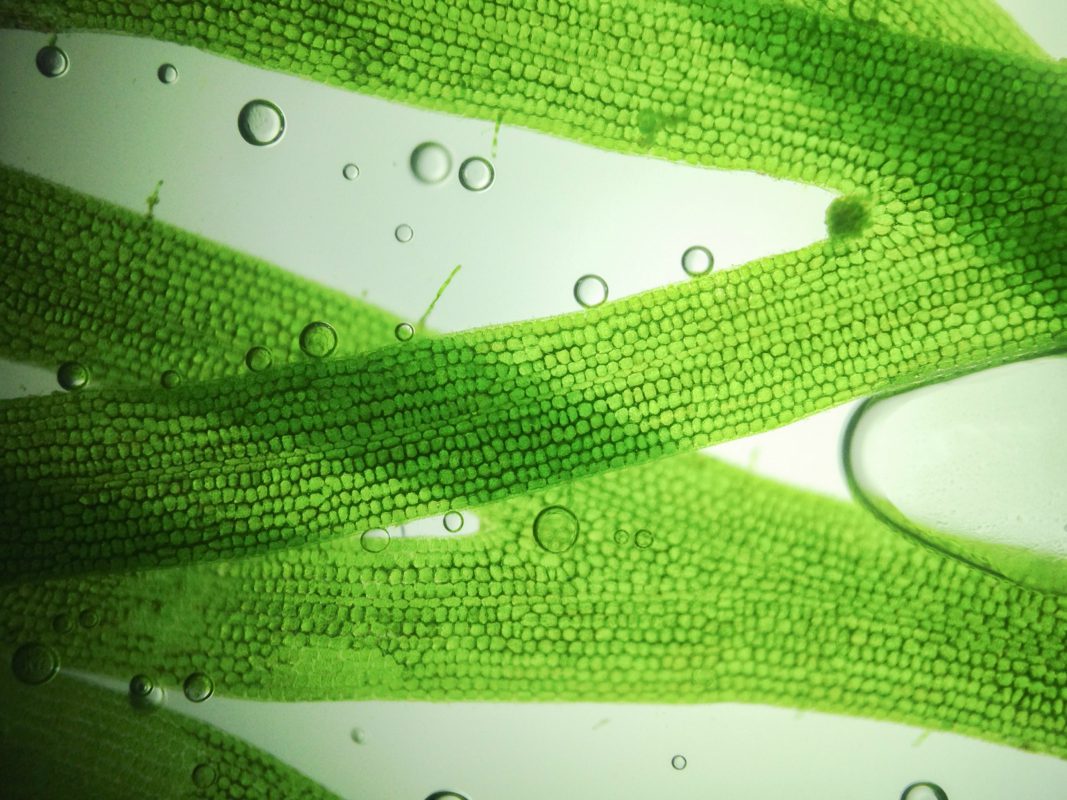Algae is the word that every pondkeeper dreads. Whether it’s single celled green water algae or filamentous blanket weed, a small amount in the pond is natural, but the overwhelming dominance of these primitive plants, that we call a bloom, is a very unwelcome and an ugly addition to the pond. Therefore, it is important to understand what causes these blooms, so that you can keep algae, be it green water or blanket weed, down to a bare minimum.
What’s the problem with algae?
A small amount of algae is inevitable in all ponds and is part of the natural ecology of the pond ecosystem. However, what we object to is the absolute domination of the algae over all other life in the pond. Single-celled algae make the water so murky that we cannot see our fish whilst filamentous algae seem to choke all other living things in the system. Any other plants in the pond are dragged down to the depths and filters and pipework can become blocked, causing knock-on-effect water quality problems.
Algae is a primitive type of plant, and like all plants it needs sunlight and nutrients to grow. If we can deprive the algae of one or both of these essential factors then we can get to the root of the problem.
Sun blocking measures are available; pergola shading can have beneficial effects and blue dyes added to the water can filter out the light of a crucial wavelength preventing the algae from growing. However, both these measures seldom work to control algae on their own.
Nutrient control
To ultimately win the war against algae, we need to control the nutrients it needs to grow. These nutrients are primarily nitrogen (in the form of nitrate (NO3–) and phosphorous (in the form of phosphate PO43-). Unfortunately, in a pond, there are very often plentiful quantities of these nutrients. Fish food breaks down, releasing phosphates and the breakdown of waste ammonia from the fish by the biological filter bacteria, ultimately raises the nitrate level in the pond.
Other nutrients essential to the algae will also be present in the water, but they are rarely limiting factors for the ‘bloom’ in algal growth.
So if two commonly found compounds in pond water are responsible for algae growth how can we get rid of them?
Phosphate management
Limiting phosphates in water is easier than controlling nitrates. Removal of any uneaten fish food is the first step. Many fish keepers will be unfamiliar with the term ‘uneaten, fish food’, but it does happen, I assure you – around 10% of food added to a pond will be uneaten! Fish faeces will be a source of phosphate also due to the presence of digested and partially digested food, and so the more food = more phosphates.
Regular cleaning of filter foams or other means of mechanical filtration will also remove decaying organic matter such as uneaten food and fish faeces and help to reduce the accumulation of phosphates.
Nitrate management
Nitrate control is a rather tricky subject. The waste nutrient is constantly being added to the system by the continuous release and breakdown of waste ammonia from the fish. The release peaks shortly after feeding time, but does drop to a baseline level of constant release that is related to their basal metabolic rate.
Many pond keepers are unlucky enough to have a level of nitrate in their tap water. Here the nitrate has run-off into the water supply from agricultural fertilisers and whereas a low level is relatively harmless to adult human health, it does add to the nitrate problems faced by pondkeepers.
The release of ammonia (and production of nitrate), is constant, so we could try less fish or infrequent feeding, but then what is the point in pondkeeping if we can’t buy new fish and feed our existing stocks?
Although water changes successfully dilute the nitrate level, but rarely reduces it to zero, even without the added complication of tap water nitrates. However, successful management of algae is possible and does centre on nutrient control.
Algae like all plants need nutrients to grow, but it is an opportunist species; if there are spare nutrients, it grows, if there aren’t it does not. Therefore, instead of trying to control the source of the nutrients invest in other plants which are pleasing to the eye to use up the nutrients instead of the algae.
Adding higher plants into the pond to compete with the algae for available nitrate and phosphate is the ultimate control for algae problems. Often other plant micronutrients can become deficient in the pond which is why regular dosing with an aquatic plant fertiliser such as Tetra PlantaMin can be beneficial. Couple this with other anti-algal measures such as a UVC (see below), shading, magnetic, electronic and chemical controls and the algae does not stand a chance.
Pond keepers with koi carp will have found that any plant life in the pond is simply regarded as a meal by the koi, and soon disappears. So planting marginal species in baskets or flexible reinforced planters out of reach of the fish will enable nutrient reduction without damage from the fish. Alternatively, construction of a vegetable filter, where a slow flow of pond water is passed through a substrate in which nitrate loving marginals such as Phragmites reeds, watercress or Mimulus have been planted also works and Koi keepers who have added these filters to an existing system are always very pleased with the results.
UVC’s and using a chemical flocculent
Where would we be without the Ultra-Violet Clarifier? Their development and use for the control of green water algae has been little short of revolutionary for pondkeepers. However, during severe green water algae bloom a UVC alone can struggle to control the situation. This is where a chemical flocculent such as Tetra’s AlgoRem can help clear the water to allow the UVC to work more effectively. By making the microscopic algae stick together, Tetra’s AlgoRem creates heavier, larger particles which fall to the pond floor and can be picked up by the pond’s pump or filter. This makes it easier for the UV light from the UVC to come into closer contact with the green water algae cells clearing the problem much more quickly. Alternatively, Tetra’s AlgoRem can be used alone to help clear greenwater.
During the above process, nitrate and phosphate are not being controlled as the greenwater algae is not there to use them. This causes the dreaded blanket weed to seize the opportunity and its growth blooms to choke out everything else in the pond. Which brings us on to algaecides.
Algaecides
Algaecide for ponds such as Tetra AlgoFin, which can be very effective at controlling blanket weed when used monthly, have to be registered and approved by the Health and Safety Executive for use in domestic ponds as most contain a specific algaecide chemical which has been proven to kill and prevent re-growth of blanket weed.
It is vital when using an algaecide that the dead algae matter is removed from the pond, otherwise it will decay in the water. This decay will stagnate the water, lowering dissolved oxygen to possibly dangerous levels, and the breakdown of the algal tissue will also ultimately give off nutrients including nitrate and phosphate triggering the same problem all over again.
If a pond is facing repeated blooms of algae, the constant use of an algaecide at full strength is going to be unwise and rather expensive, so the ultimate control is nutrient management, backed up with preventative algaecide dosing, UVC, shading, electronic control, and magnets.

